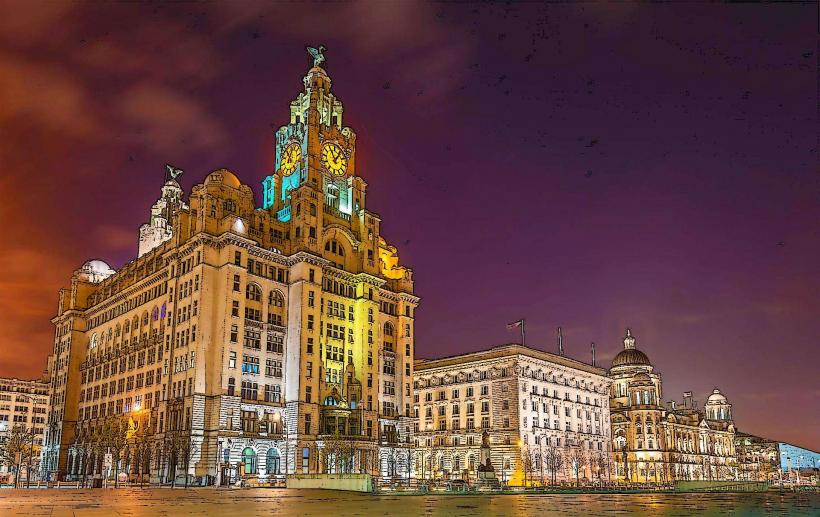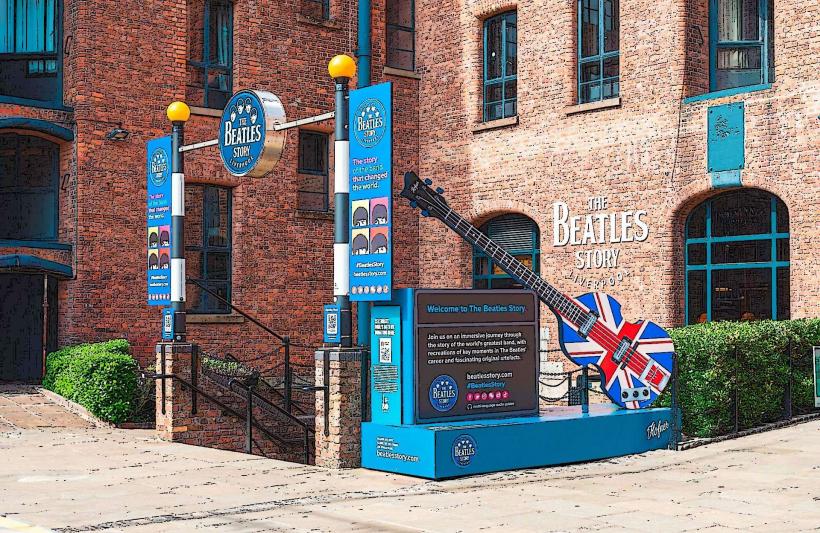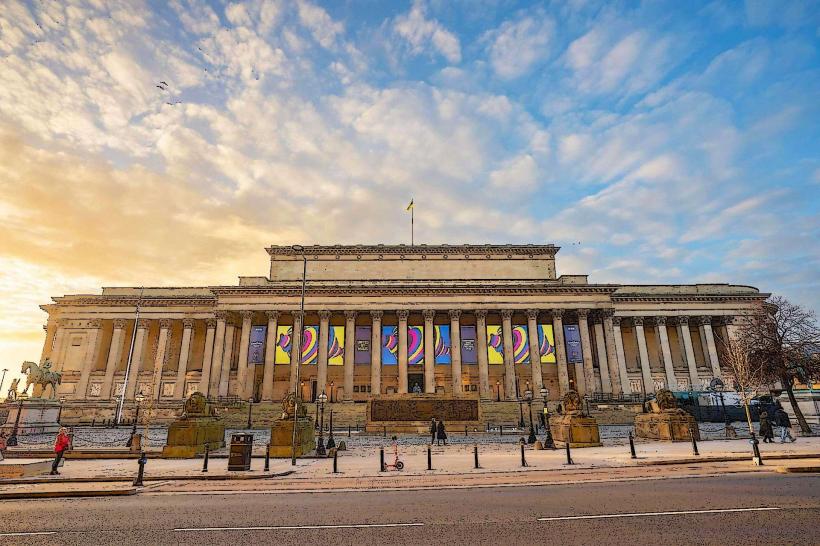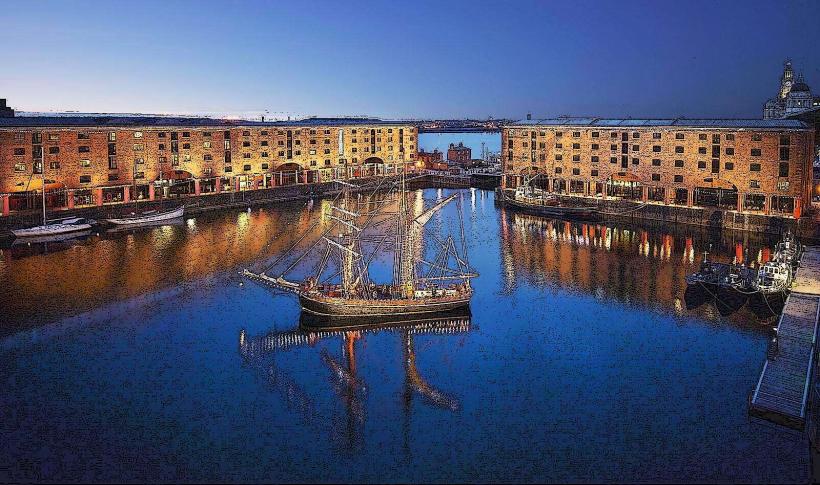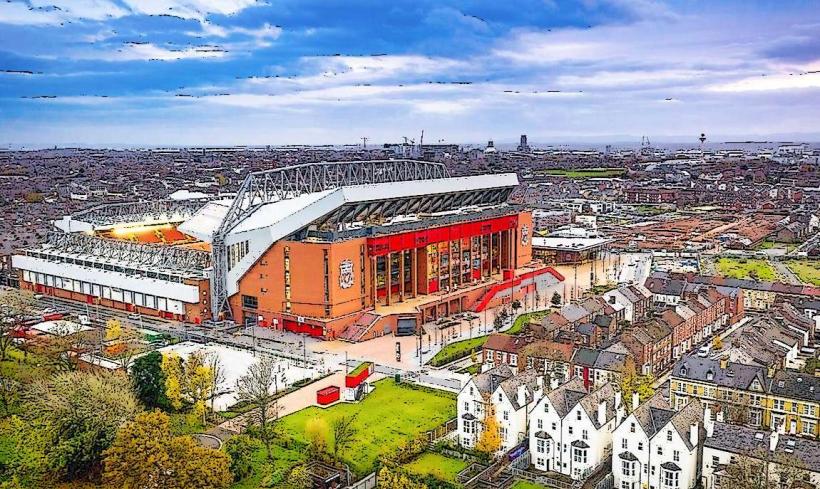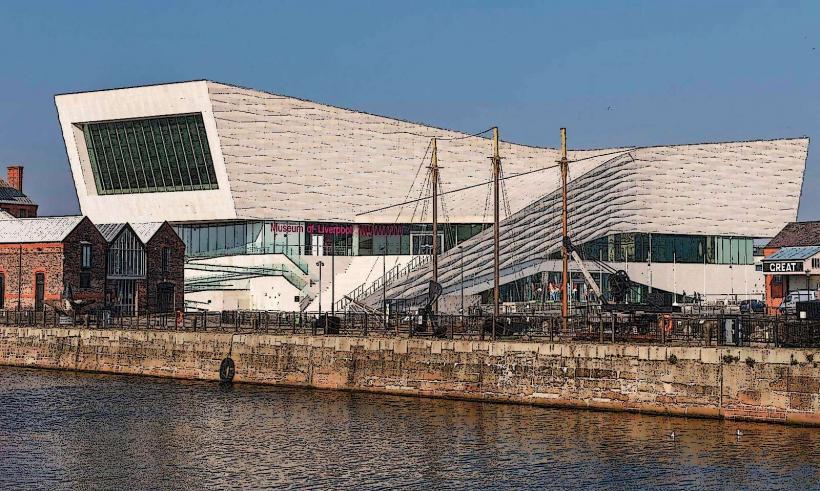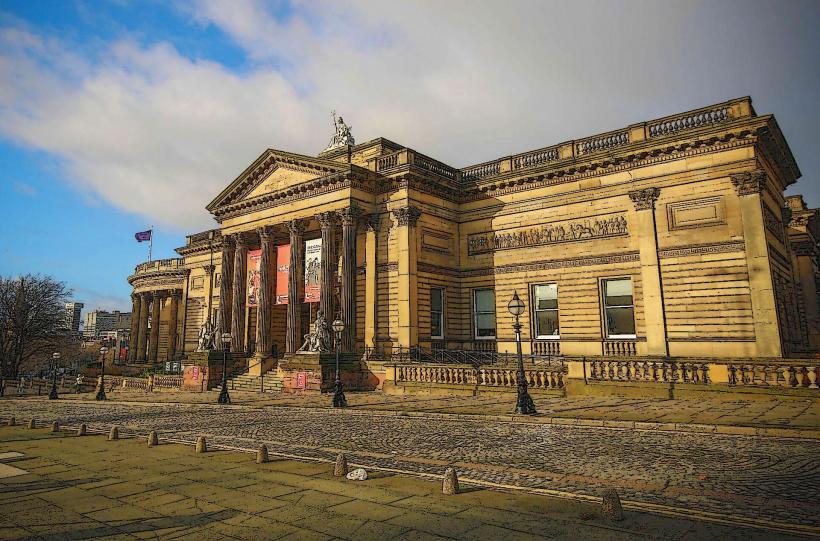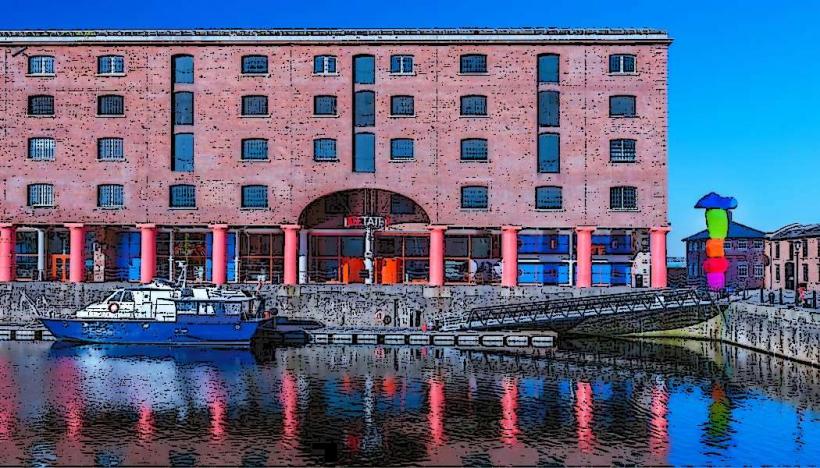Information
Landmark: Liverpool CathedralCity: Liverpool
Country: United Kingdom
Continent: Europe
Liverpool Cathedral, officially known as the Cathedral Church of Christ in Liverpool, is a magnificent Anglican cathedral located in the heart of Liverpool, England. It is the largest cathedral in the UK and the fifth-largest in Europe, standing as a monumental example of Gothic Revival architecture. The cathedral is a symbol of Liverpool's spiritual life, historical heritage, and architectural achievement.
History and Origins
The idea of building a new cathedral in Liverpool was proposed in the late 19th century to accommodate the city's growing population and its burgeoning religious and civic identity. The city had been granted an Episcopal See (a bishop’s seat) in 1880, and by the early 1900s, it was clear that a grand new cathedral was necessary to represent the Anglican community in the rapidly expanding industrial city.
The construction of Liverpool Cathedral was initiated by the Church of England in 1904, under the direction of the Archbishop of York, and the building's design was chosen after a competition in 1903. The winning design was created by the architect Sir Giles Gilbert Scott, a young architect who would go on to design many other notable buildings, including the famous red telephone box. His design was a bold vision for a cathedral that would be both functional and a symbol of the city’s aspirations.
Architecture and Design
The architecture of Liverpool Cathedral is stunning and distinctive, combining elements of traditional Gothic architecture with the innovation and scale required for a cathedral of its size.
Gothic Revival Style: The cathedral is designed in the Gothic Revival style, which draws inspiration from the grandeur of medieval cathedrals across Europe. However, Scott’s design incorporated modern materials, techniques, and scale, giving the building a unique early 20th-century flavor. Its monumental proportions and striking details reflect the ambition of Liverpool’s spiritual community to build a cathedral that would rival the great churches of the world.
Size and Scale: The cathedral's scale is truly awe-inspiring. It is 202 meters (664 feet) long, with the nave (central aisle) being one of the longest of any cathedral in the world. The tower rises to 101 meters (331 feet), making it the tallest cathedral in the UK. The cathedral is also known for its impressive width, allowing it to accommodate large congregations for major services and events.
Exterior: The exterior of Liverpool Cathedral is dominated by its massive western façade, which is adorned with intricate stone carvings and stained-glass windows. The design features twin towers, with the larger one housing the bell chamber and the roofline featuring buttresses, flying buttresses, and a high gabled roof typical of Gothic cathedrals.
Interior: The interior of Liverpool Cathedral is equally breathtaking. The nave is an enormous space, with high vaulted ceilings, magnificent stone columns, and stained-glass windows that depict scenes from the Bible. The altar is at the eastern end of the cathedral, and above it, visitors can admire the incredible Mosaics that cover the walls.
The Great Organ: One of the standout features of the cathedral is its magnificent Great Organ, which is the largest in the UK. It is situated in the western gallery of the cathedral and can be heard during services and concerts.
The Lady Chapel: The Lady Chapel, located at the eastern end of the cathedral, is another notable feature. It is dedicated to the Virgin Mary and is known for its intimate and serene atmosphere, decorated with stained-glass windows, altar pieces, and sculptures.
The Crypt: Below the cathedral is the crypt, which houses several chapels, spaces for prayer, and a number of memorials to prominent figures in Liverpool’s history. The crypt is also a significant area for historical exhibits and artwork.
Stained-Glass Windows: The cathedral features some remarkable stained-glass windows that were designed by several prominent artists. Among these are the windows in the Lady Chapel, which depict biblical scenes and figures in striking colors, adding to the spiritual and artistic atmosphere of the cathedral.
Construction and Challenges
The construction of Liverpool Cathedral began in 1904, but the building project faced significant challenges, particularly during the early decades. The First World War interrupted construction, and financial difficulties slowed progress. The original plan was ambitious, but because of funding limitations and engineering challenges, it took a long time to bring Scott's vision to life.
It was not until 1924 that the cathedral’s first service was held, although construction was far from complete. The cathedral continued to be built incrementally, with different sections of the building completed over time. The cathedral was officially consecrated in 1924, but work continued for several decades afterward, and it wasn’t until 1978 that the entire building was completed.
Notable Features and Highlights
The Tower: The cathedral’s towering spire is a defining feature of the Liverpool skyline. Visitors can climb to the top of the tower to enjoy breathtaking views of the city, the River Mersey, and the surrounding landscape. The tower is often open for guided tours, and it remains one of the highest points in Liverpool.
The Bells: The cathedral houses a stunning set of bells, which are among the heaviest in the world. The Grand Organ is also used regularly during major services and concerts, filling the cathedral with beautiful sound.
Art and Memorials: The interior of Liverpool Cathedral contains a wealth of artwork, including sculptures and memorials to key figures in the city’s history, such as William Gladstone, the former Prime Minister of the UK, who is commemorated with a large memorial.
Choral and Musical Tradition: The cathedral has a rich musical tradition and hosts a world-renowned choir. Regular concerts, choral performances, and organ recitals are a significant part of the cathedral’s offerings.
Liverpool Cathedral Today
Today, Liverpool Cathedral is a vibrant center of worship, community, and cultural activity. It remains a place of spiritual significance, hosting regular services, including Eucharist and Evening Prayer, as well as special events such as weddings, christenings, and funerals. It also plays an important role in the broader cultural life of Liverpool, hosting concerts, exhibitions, and educational events.
Visitor Experience:
Visitors can explore the cathedral on their own or participate in guided tours that delve deeper into its history, architecture, and role in the city. The cathedral offers visitor services, including cafes, shops, and an area for reflection. The gift shop sells religious items, books, and artwork related to the cathedral’s history.
Concerts and Events:
As well as regular church services, the cathedral hosts a variety of musical performances, including classical music concerts, organ recitals, and seasonal events such as Christmas services and Easter concerts.
Community Role:
Liverpool Cathedral continues to serve as a place of worship and reflection for the people of Liverpool and the wider region. It also offers programs for the local community, such as youth engagement, educational initiatives, and partnerships with local charities.
Conclusion
Liverpool Cathedral is not only an architectural masterpiece but also a vibrant cultural hub and an enduring symbol of the city’s faith, history, and ambition. From its towering presence in the city’s skyline to its beautiful interior and significant place in the religious life of Liverpool, the cathedral remains a must-visit for anyone exploring the city. It stands as a testament to the vision, resilience, and artistic achievement of those who created it, and it continues to inspire awe and reverence in visitors from around the world.

